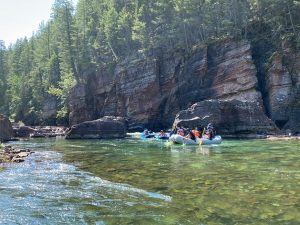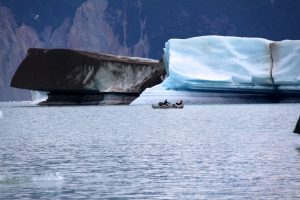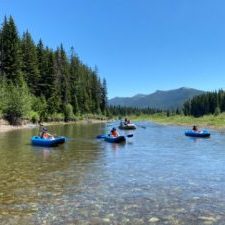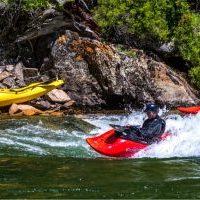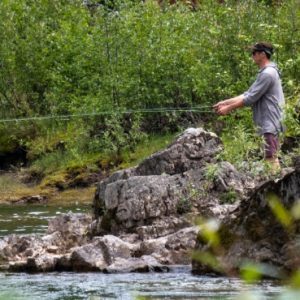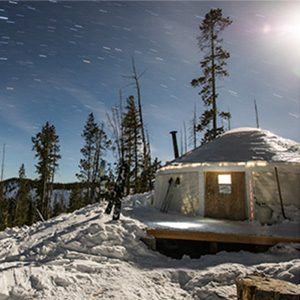A short guide to the classes of whitewater rapids
March 17, 2015
If you’re looking to book a whitewater rafting trip, it’s very important that you make sure the trip has the class of rapids you are looking for. Whitewater rapids are rated according to a system called the International Scale of River Difficulty, which was created so that rafters around the world would be able to use the same rating system to classify rapids by their difficulty level. The ratings are not an exact science, but they do allow river guides and whitewater rapids enthusiasts to get a general sense of what to expect when they set out on a particular river.
- Class I (easy): This is obviously the easiest class of rapids, requiring no maneuvering and very little skill to navigate in a raft. The water is fast-moving with some small waves but unobstructed and very straight forward in any water craft.
- Class II (novice): Class II rapids begin to include some obstacles, such as large rocks, but these can easily be avoided with little maneuvering in a raft. Great for inflatable kayaks and beginner rafters.
- Class III (intermediate): This is where things start to get a little more exciting. In a river with Class III rapids, you can expect moderate waves, with some maneuvering required, and a bit tighter, faster-moving rapids, fun and exciting in inflatable kayaks. Class III rapids could tip over an inflatable kayak not in the right spot. Splashy in rafts but generally not a very high risk of capsizing.
- Class IV (advanced): Class IV rapids are a step up in difficulty requiring more complex or dynamic maneuvering. For example, instead of just staying on the left side of the river, you might need to move from left to center and back to the left. Scouting class IV rapids is usually a good idea if not familiar with the rapid at the current water flow. Often a good idea to set potential safety in case of swimmers.
- Class V (extreme): Any Class V rapids are dangerous and require extensive experience and technical skills. These rapids are usually long and require multiple complex moves with dangerous consequences. Often only run by experienced kayakers or rafters. Rarely commercially rafted.
- Class VI: un-runnable.
The classes of rapids are notated by a + or – to help more accurately rate each rapid and give the river user a better idea of the difficulty. Often rapid ratings change dramatically depending on water levels. Some rapids are much easier at higher flows, then become much more difficult at lower flows or vise versa.
To book an adventure rafting trip, check out the whitewater rafting packages we offer on our “Find a Trip” page.
